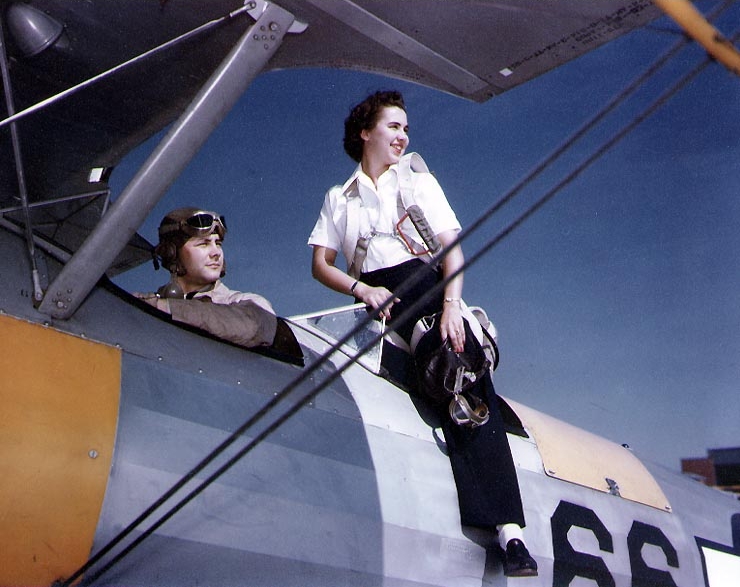|
Pryor Field Regional Airport
Pryor Field Regional Airport , named for Schyler Pryor, a Southern Aviation Training School (SATS) instructor who was killed in a midair collision in February 1944, is a public airport located three miles (5 km) northeast of the central business district of Decatur and south of Athens, in Limestone County, Alabama, United States. It is owned by the Pryor Field Airport Authority., effective July 5, 2007 Situated next to Calhoun Community College, the airport serves the western portion of the Huntsville-Decatur Combined Statistical Area and most of the Decatur Metropolitan Area. Pryor Field is currently the busiest regional airport in Alabama. Facilities and aircraft Pryor Field Regional Airport covers an area of which contains one asphalt paved runway (18/36) measuring 6,107 x 100 ft (1,861 x 30 m). For the 12-month period ending May 3, 2006, the airport had 167,701 aircraft operations, an average of 459 per day: 91% general aviation, 7% military and 2% air tax ... [...More Info...] [...Related Items...] OR: [Wikipedia] [Google] [Baidu] |
Decatur, Alabama
Decatur () is the largest city and county seat of Morgan County, Alabama, Morgan County (with a portion also in Limestone County, Alabama, Limestone County) in the U.S. state of Alabama. Nicknamed "The River City," it is located in North Alabama, northern Alabama on the banks of Wheeler Lake along the Tennessee River. The population was 57,938 at the 2020 United States census, 2020 census. Decatur is the core city of the two-county large Decatur metropolitan area, Alabama, Decatur metropolitan area, with an estimated population of 157,425 in 2022. Combined with the Huntsville Metropolitan Area, the two create the Huntsville-Decatur Combined Statistical Area, of which Decatur is the second-largest city. Like many southern cities in the early 19th century, Decatur's early success was based upon its location along a river. Railroad routes and boating traffic pushed the city to the front of North Alabama's economic atmosphere. The city rapidly grew into a large economic center with ... [...More Info...] [...Related Items...] OR: [Wikipedia] [Google] [Baidu] |
Glider Aircraft
A glider is a fixed-wing aircraft that is supported in flight by the dynamic reaction of the air against its lifting surfaces, and whose gliding flight, free flight does not depend on an engine. Most gliders do not have an engine, although motor-gliders have small engines for extending their flight when necessary by sustaining the altitude (normally a sailplane relies on rising air to maintain altitude) with some being powerful enough to take off by Motor glider, self-launch. There are a wide variety of types differing in the construction of their wings, aerodynamic efficiency, location of the pilot, controls and intended purpose. Most exploit lift (soaring), meteorological phenomena to maintain or gain height. Gliders are principally used for the air sports of gliding, hang gliding and paragliding. However some spacecraft have been designed to descend as gliders and in the past military gliders have been used in warfare. Some simple and familiar types of glider are toys such a ... [...More Info...] [...Related Items...] OR: [Wikipedia] [Google] [Baidu] |
Huntsville Times
''The Huntsville Times'' was a thrice-weekly newspaper published in Huntsville, Alabama. It also served the surrounding areas of north Alabama's Tennessee Valley region. The ''Times'' formerly operated as an afternoon paper, but moved to mornings years after ''The Huntsville News'' ceased publication. It was published by The Huntsville Times Company, Inc., a subsidiary of Advance Publications, Inc. The paper was first acquired by Advance's founder, Samuel Newhouse Sr., in 1955. The ''Times'' is a sister paper to two other Advance-owned publications within Alabama, ''The Birmingham News'' and the (Mobile) '' Press-Register''. On October 1, 2012, all three papers went from daily to thrice-weekly print schedules. All three are now published by an Advance subsidiary called Alabama Media Group. On February 26, 2023, the ''Times'' and its sister newspapers ceased printed publication, with all of its content moving to the group's website, al.com. The ''Times'' had the third highest ... [...More Info...] [...Related Items...] OR: [Wikipedia] [Google] [Baidu] |
Alabama Register Of Landmarks And Heritage
The Alabama Register of Landmarks and Heritage (ARLH), commonly referred to as the Alabama Register, is an official listing of buildings, sites, structures, objects, and districts deemed worthy of preservation in the U.S. state of Alabama. These properties, which may be of national, state, and local significance, are designated by the Alabama Historical Commission. The designation is honorary and carries no direct restrictions or incentives. The register includes properties such as cemeteries, churches, moved properties, reconstructed properties, and properties at least 40 years old which may not normally qualify for listing in the National Register of Historic Places. There are approximately 1,711 properties and districts listed on the Alabama Register. Of these, approximately 243 are also listed on the National Register of Historic Places and 6 are designated as National Historic Landmarks. Nomination The Alabama Register was created by the Alabama Historical Commission to pr ... [...More Info...] [...Related Items...] OR: [Wikipedia] [Google] [Baidu] |
Browns Ferry Nuclear Plant
The Browns Ferry Nuclear Power Plant is located on the Tennessee River near Decatur and Athens, Alabama, on the north side (right bank) of Wheeler Lake. The site has three General Electric boiling water reactor (BWR) nuclear generating units and is owned entirely by the Tennessee Valley Authority (TVA). With a generating capacity of nearly 3.8 gigawatts, it is the third most powerful nuclear power plant in the United States, behind the Palo Verde Nuclear Power Plant in Arizona and the Vogtle Nuclear Power Plant in Georgia, and the most powerful generating station operated by TVA. History The nuclear power plant is named after a ferry that operated at the site until the middle of the 20th century. (Brown's Ferry) Browns Ferry was TVA's first nuclear power plant; its approval occurred on June 17, 1966 and construction began in September 1966. In 1974, the time of its initial operation, it was the largest nuclear plant in the world. It was the first nuclear plant to use units cap ... [...More Info...] [...Related Items...] OR: [Wikipedia] [Google] [Baidu] |
VHF Omnidirectional Range
Very High Frequency Omnidirectional Range Station (VOR) is a type of short-range VHF radio navigation system for aircraft, enabling aircraft with a VOR receiver to determine the azimuth (also radial), referenced to magnetic north, between the aircraft to/from fixed VOR ground transmitter, radio beacons. VOR and the first DME(1950) system (referenced to 1950 since different from today's DME/N) to provide the slant range distance, were developed in the United States as part of a U.S. civil/military program for Aeronautical Navigation Aids in 1945. Deployment of VOR and DME(1950) began in 1949 by the U.S. CAA (Civil Aeronautics Administration). ICAO standardized VOR and DME(1950) in 1950 in ICAO Annex ed.1. Frequencies for the use of VOR are standardized in the very high frequency (VHF) band between 108.00 and 117.95 MHz Chapter 3, Table A. To improve azimuth accuracy of VOR even under difficult siting conditions, Doppler VOR (DVOR) was developed in the 1960s. VOR is accordi ... [...More Info...] [...Related Items...] OR: [Wikipedia] [Google] [Baidu] |
Convair
Convair, previously Consolidated Vultee Aircraft Corporation, was an American aircraft-manufacturing company that later expanded into rockets and spacecraft. The company was formed in 1943 by the merger of Consolidated Aircraft and Vultee Aircraft. In 1953, it was purchased by General Dynamics, and operated as their Convair Division for most of its corporate history. Convair is best known for its military aircraft; it produced aircraft such as the Convair B-36 Peacemaker and Convair B-58 Hustler strategic bombers, and the Convair F-102 Delta Dagger and Convair F-106 Delta Dart interceptors. It also manufactured the first Atlas rockets, including the rockets that were used for the crewed orbital flights of Project Mercury. The company's subsequent Atlas-Centaur design continued this success and derivatives of the design remain in use as of 2025. The company also entered the jet airliner business with its Convair 880 and Convair 990 designs. These were smaller than conte ... [...More Info...] [...Related Items...] OR: [Wikipedia] [Google] [Baidu] |
Douglas DC-3
The Douglas DC-3 is a propeller-driven airliner manufactured by the Douglas Aircraft Company, which had a lasting effect on the airline industry in the 1930s to 1940s and World War II. It was developed as a larger, improved 14-bed sleeper version of the Douglas DC-2. It is a low-wing metal monoplane with conventional landing gear, powered by two radial piston engines of . Although the DC-3s originally built for civil service had the Wright R-1820 Cyclone, later civilian DC-3s used the Pratt & Whitney R-1830 Twin Wasp engine. The DC-3 has a cruising speed of , a capacity of 21 to 32 passengers or 6,000 lbs (2,700 kg) of cargo, and a range of , and can operate from short runways. The DC-3 had many exceptional qualities compared to previous aircraft. It was fast, had a good range, was more reliable, and carried passengers in greater comfort. Before World War II, it pioneered many air travel routes. It was able to cross the continental United States from Ne ... [...More Info...] [...Related Items...] OR: [Wikipedia] [Google] [Baidu] |
Civil Aeronautics Administration (United States)
The Air Commerce Act of 1926 created an Aeronautic Branch of the United States Department of Commerce. Its functions included testing and licensing of pilots, certification of aircraft and investigation of accidents. In 1934, the Aeronautics Branch was renamed the Bureau of Air Commerce, to reflect the growing importance of commercial flying. It was subsequently divided into two authorities: the Civil Aeronautics Administration (CAA), concerned with air traffic control, and the Civil Aeronautics Board (CAB), concerned with safety regulations and accident investigation. Under the Federal Aviation Act of 1958, the CAA's powers were transferred to a new independent body, the Federal Aviation Administration (FAA). In the same year, the National Aeronautics and Space Administration (NASA) was created after the Soviet Union’s launch of the first artificial satellite. The accident investigation powers of the CAB were transferred to the new National Transportation Safety Board in 196 ... [...More Info...] [...Related Items...] OR: [Wikipedia] [Google] [Baidu] |
War Assets Administration
The War Assets Administration (WAA) was created to dispose of United States government-owned surplus material and property from World War II. The WAA was established in the Office for Emergency Management, effective March 25, 1946, by Executive Order 9689, January 31, 1946. It was headed by Robert McGowan Littlejohn. Predecessor agencies * Petroleum Reserves Corporation (PRC), Reconstruction Finance Corporation (RFC, June–July 1943) * PRC, Office of Economic Warfare (OEW, July–September 1943) * PRC, Foreign Economic Administration (FEA, September 1943-September 1945) * PRC, RFC (September–November 1945) * War Assets Corporation (WAC), RFC (November 1945-March 1946) * Surplus War Property Administration (SWPA), Office of War Mobilization (OWM, February–October 1944) * Surplus Property Board (SPB), Office of War Mobilization and Reconversion (OWMR, October 1944-September 1945) * Surplus Property Administration (SPA), OWMR (September 1945-March 1946) Functions The W ... [...More Info...] [...Related Items...] OR: [Wikipedia] [Google] [Baidu] |
P-40 Warhawk
The Curtiss P-40 Warhawk is an American single-engined, single-seat, all-metal fighter-bomber that first flew in 1938. The P-40 design was a modification of the previous Curtiss P-36 Hawk which reduced development time and enabled a rapid entry into production and operational service. The Warhawk was used by most Allies of World War II, Allied powers during World War II, and remained in frontline service until the end of the war. It was the third most-produced American fighter of World War II, after the North American P-51 Mustang and Republic P-47 Thunderbolt; by November 1944, when production of the P-40 ceased, 13,738 had been built,Murphy and McNiece 2009, p. 83. all at Curtiss-Wright Corporation's main production facilities in Buffalo, New York. P-40 Warhawk was the name the United States Army Air Corps gave the plane, and after June 1941, the USAAF adopted the name for all models, making it the official name in the US for all P-40s. The Commonwealth of Nations, British Com ... [...More Info...] [...Related Items...] OR: [Wikipedia] [Google] [Baidu] |
PT-17 Stearman
The Stearman (Boeing) Model 75 is an American biplane formerly used as a military Trainer (aircraft), trainer aircraft, of which at least 10,626 were built in the United States during the 1930s and 1940s. Stearman Aircraft became a subsidiary of Boeing in 1934. Widely known as the Stearman, Boeing Stearman, or Kaydet, it served as a primary trainer for the United States Army Air Forces, the United States Navy (as the NS and N2S), and with the Royal Canadian Air Force as the Kaydet throughout World War II. After the conflict was over, thousands of surplus aircraft were sold on the civilian market. In the immediate postwar years, they became popular as Aerial application, crop dusters and sports planes, and for aerobatics, aerobatic and wing walking use in air shows. Design and development In late 1933, Stearman engineers Mac Short, Harold W. Zipp, and J. Jack Clark took a 1931 Lloyd Stearman design, and added cantilever landing gear and adjustable elevator trim tabs, ... [...More Info...] [...Related Items...] OR: [Wikipedia] [Google] [Baidu] |









